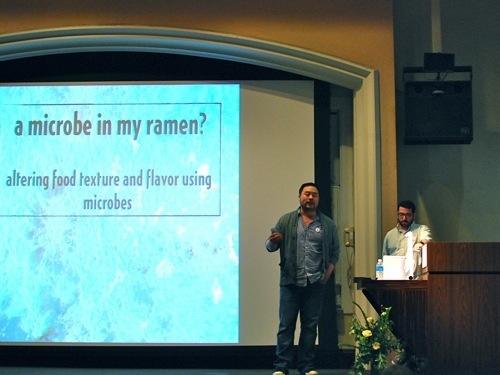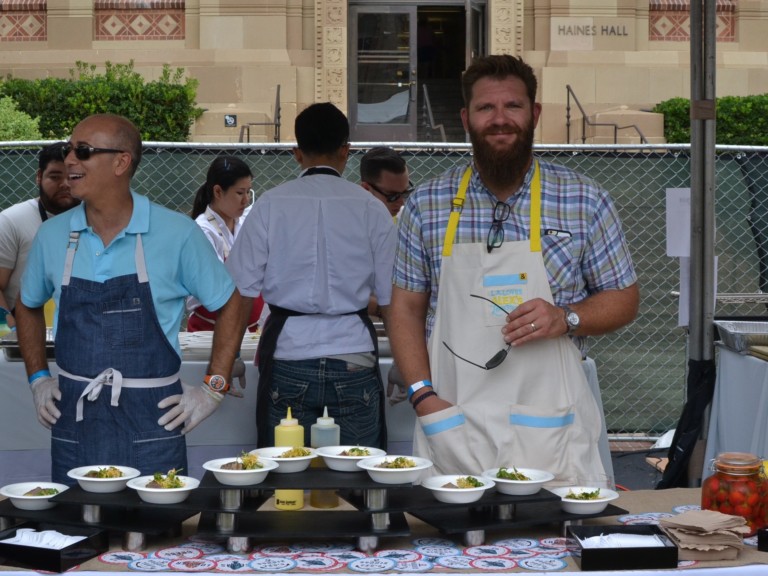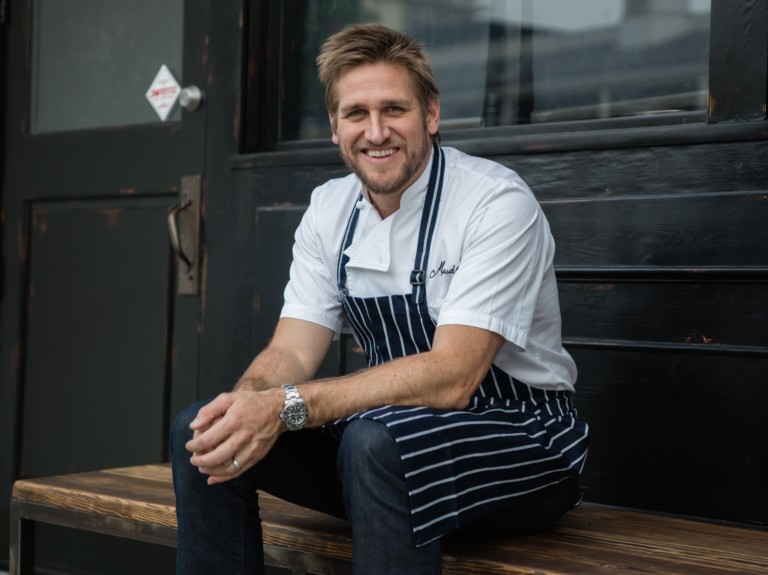The UCLA Science and Food lecture series featured David Chang, a classically trained chef who’s built a progressive culinary empire that spans from New York to Sydney and Toronto and covers everything from casual noodle bars to upscale omakase-style restaurants. On May 24, his presentation focused on “The Goodness of Microbes.” As Chang, his food lab director Daniel Felder and writer Peter Meehan eloquently pointed out on UCLA’s campus near Westwood Village, ramen is the provenance of particularity. All of that attention to detail, and even bacteria, can be beneficial.
David Chang began his presentation by saying, “You’re either in or you’re out. You either want to learn more about how to manipulate food in new ways [or you don’t].” Wylie Dufresne and Ferran Adria influenced him in want to start “challenging the status quo of food.” Given that, he opened a 210-square-foot Momofuku R&D lab under the direction of Daniel Felder. As Chang explained, “At Momofuku, the last two years, we’ve just been letting stuff rot.” Not only that, but they started focusing on microbes, which not only help compose human cells, but also produce compounds that affect flavor and texture. Look at xantham gum for sauces and salad dressings, natto and MSG, and you’re experiencing the influence of microbes at play.
David Chang first became known for ramen at New York’s Momofuku Noodle Bar, and in the food lab, he and Felder systematically dissected the broth, tare, noodles and garnishes. He said, “”We’re always trying to find that delicious factor and reverse engineer it from there.”
Steps they took included creating a shiitake dashi, toying with tare (chicken and pork infused soy sauce, typically with sake and mirin), and roasting bones for the sake of Maillard reaction and umami. They cook kombu at 60 degrees celsius, which is the optimum temperature to extract glutamic acid. Any higher and it becomes bitter and murky. They add katsuobushi (petrified fish). Chang also pointed out that “without aspergillus oryzae, we really wouldn’t have Asian cuisine today.” The fungus is responsible for soy sauce, sake and more.
He also explained the benefits of alkalinity in noodles, saying, “Alkalinity is the opposite of acidity” and noodles become stiffer, holding up better in soups, with more alkalinity. He makes alkaline noodles with wheat flour, salt, water and kansui. Kansui is an alkaline mineral water, which raises Ph level. Kansui turns noodles yellow, and add too much, it becomes green.
Chang delved into more microbial principles and processes, with the occasional help from video interludes featuring food science mastermind Harold McGee. Chang explained, “Koji is essentially the sourdough starter of miso and soy sauce,” in Momofuku’s case, barley and basmati, cooked and inoculated with orzyae at 33-45 Celsius for two days. He also explored Hishio (“Chinese Miso”) and Jiang (the Korean version), which dates to at least 545 AD. Microbes clearly have staying power.









Leave a Comment